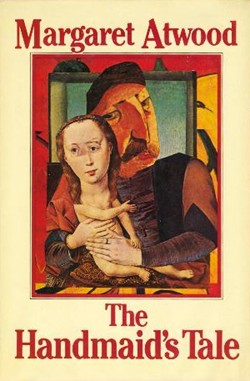 Historian Timothy Snyder keeps telling us “Do not obey in advance” even as more and more people appear to be leaping up to kiss the ring (or perhaps a part of the anatomy) of the grifter now apparently headed back to the White House in the ultimate triumph of the January 6 insurrection.
Historian Timothy Snyder keeps telling us “Do not obey in advance” even as more and more people appear to be leaping up to kiss the ring (or perhaps a part of the anatomy) of the grifter now apparently headed back to the White House in the ultimate triumph of the January 6 insurrection.
This week in his newsletter he is looking at Margaret Atwood’s The Handmaid’s Tale in a three-part series. The third should be available the same day this post appears; the first is here and the second here.
In the first part, he critiques The New York Times’s summary of the book on its current trade paper bestseller list (where, I am glad to note, the book, which first came out forty years ago, has appeared for 139 weeks). The Times’s 16-word summary reads: “In the Republic of Gilead’s dystopian future, men and women perform the services assigned to them.”
His whole piece is worth reading, but he sums it up here:
Christian Reconstructionism is now at the edge of power in the United States, and the attitude of the relevant people towards the female body and indeed towards rape is an essential element of what is happening and what is likely to happen. Both-sidesism, prudery, and euphemisms are keeping much of the media from bringing this story together in time. We will need clear language in general, and this novel in particular, to see the whole picture. I will develop this in two posts to come.
In the second essay, he makes this point:
The Republic of Gilead in The Handmaid’s Tale is not a purely invented world based on the law and culture of one religion or another. It is a well-drawn post-America.
Prof. Snyder thinks this book is important to understanding where we are today and I certainly don’t disagree, though perhaps the most disturbing thing about what an accurate picture it paints of where we are is that the country did not take appropriate steps to head it off.
We can all argue about what those steps should have been, but I’ll leave that to others. I’m tired of dishing out blame. I’m more interested in fixes.
Alas, The Handmaid’s Tale, while an excellent description of one of the places we could be headed (the others being a utopia for certain tech bros and no one else or just the grifter’s unparalleled corruption accompanied by significant foreign influence) is not the best book for fixes. Continue reading “Living in Margaret Atwood’s Future”…
